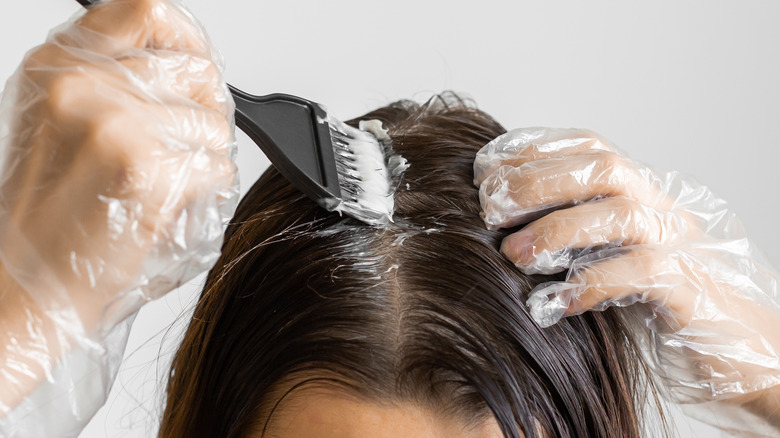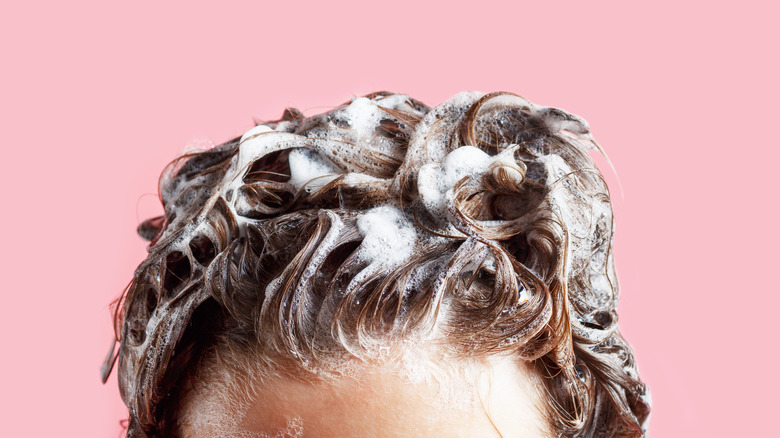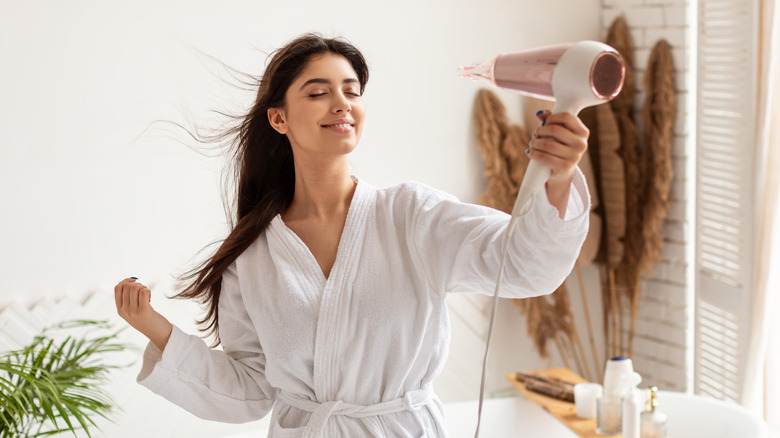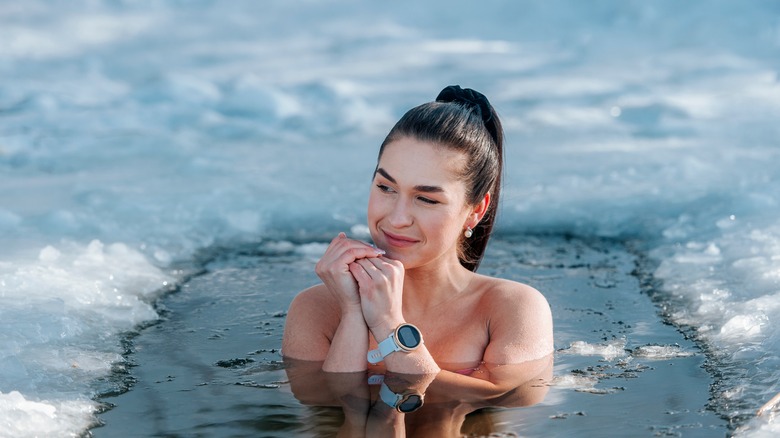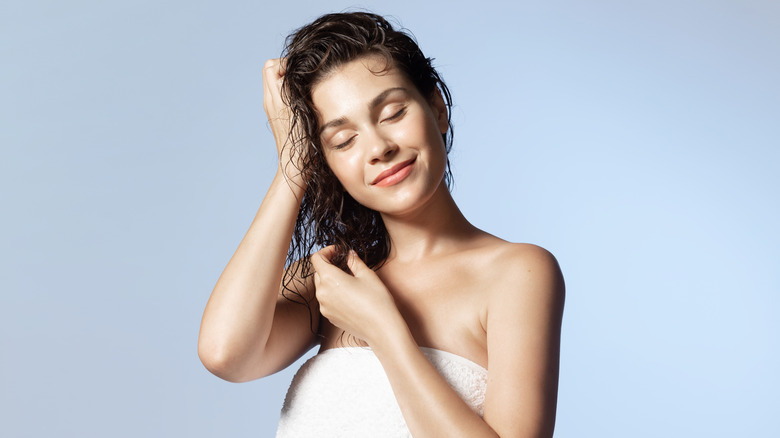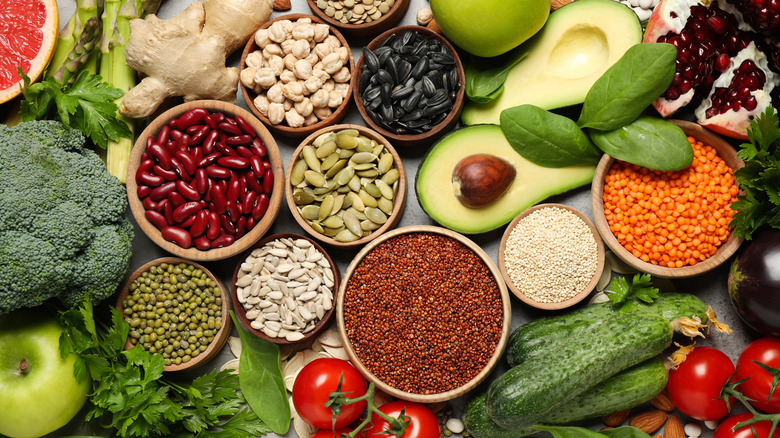The Key Things To Keep In Mind To Keep Your Color-Treated Hair Healthy
Few transformations are as exciting and even emotional as getting your hair dyed. If you plan to completely change your hair color to a different shade, getting your hair dyed could be a brand new start. Whether you are going for a drastic change or just for a touch-up, getting your hair dyed is a challenging process for your hair. According to Wella, when you dye your hair, the hair coloring first enters the hair cuticle and, later, the hair cortex. Once here, the hair coloring and hair cortex bond. With so much going on in your hair, it's easy to see why it is more vulnerable than it was before getting dyed.
Color-treated hair needs to be specially cared for to maintain its health. Unlike natural hair, there are a lot of variables that can affect and damage color-treated hair. While the priority is your hair's health, keeping color-treated hair will protect your hair dye investment. The last thing you want is to pay for hair dye and have it completely ruined in no time.
Wash your hair less often
One way you can protect your color-treated hair is by washing it less often. Matrix recommends limiting your hair wash to two to three times a week to help preserve your color. Washing your hair often will only make the color fade quicker as you are stripping the hair's natural oils. These natural oils not only add nutrients to the hair but they help preserve the intensity of your hair color. Depending on the type of hair you have, limiting your hair wash can be challenging. To prevent overly greasy hair, simply ensure you have a quality dry shampoo on hand for the days between washes. A good dry shampoo will soak up that extra oil without removing all of your natural oil.
Skin Kraft adds that when you do shampoo your hair, ensure you are using a sulfate-free shampoo. The sulfate ingredient found in most shampoos will ultimately strip your hair of moisture and color. When your hair is dried out, the color will fade and create unhealthy hair strands. Stick with sulfate-free products or organic ingredients to ensure you are still cleaning your hair without drying it out. Ensure each hair wash is purposeful and done with caution.
Avoid the heat
It's a known fact that using heated tools on your hair is the easiest way to damage the hair. Luxy Hair mentions that have been color-treated are already vulnerable and fragile. When you repeatedly add heat to your hair, you are further exposing the hair to damage and potentially drying it out. If you do plan to use heated tools, try to limit it to only one to two times a week. Don't forget to use heat protection before using hot tools, as this will create a film around your hair strands that will act as a buffer between your hair and the heat.
Robert Gold Salon adds that you also need to avoid harmful UV rays. Like with your skin, the sun's UV rays have the power to damage color-treated hair. UV rays can fade color by breaking down the chemical bonds in the hair dye. Heat can also expose the hair cuticle, making it easier for the color to fade. For those heading on a sunny vacation, include hair products in your routine that include UV protection, and consider carrying a sun hat to add some more coverage.
Use cold water
Knowing that heat is potentially damaging to your hair, you also need to consider the temperature you use in the shower. Like other forms of heat, hot water can also cause havoc on color-treated hair. Pureology explains that heat can swell the hair cuticles and cause them to open up. With the cuticles open, the molecules found in the dye can easily rinse with the water. This means the hotter the water, the more likely you are to find it going down the drain.
Madison Reed adds that not only is hot water bad for your hair but also your skin, meaning there's very little reason to use hot water. However, if you are prone to a hot shower, at the least use the final minutes of your shower to cool down with a cold rinse. Cold water will help close up these open hair cuticles and seal the color. You don't need to stand in freezing water for a long time; a simple cold rinse is more than enough to stop the color from fading.
Always use conditoner
As simple as it may sound, using the proper conditioner is vital for maintaining your color-treated hair. L'Oréal Paris explains that having color-treated hair makes it easier for your hair to become dry, dull, and brittle. Conditioners can help add moisture back into the hair to ensure it maintains a shine and the color can maintain its vibrancy. When your hair is dull and dry, the color will fade a lot quicker. Keeping it hydrated and shiny is the best way to showcase your hair color.
All Things Hair adds that not only can conditioners help with moisture loss but they can help undo some of the damage of the hair coloring process. When you get your hair dyed, the hair strands go through various chemicals and damaging processes, conditioners can help bring these strands back to life without fading the color. When it comes to what conditioners to use, this can include your shower conditioner, leave-in conditioners, and deep-conditioning masks. All these products will help maintain your color while giving it a shiny and hydrated look.
Keep a healthy diet
While having the proper hair routine and products is vital for your hair's health after a color treatment, there's another aspect to maintaining your color-treated hair. IMBB recommends eating a diet rich in protein and iron to help maintain your hair's health. Your diet can ultimately help your scalp health and hair texture, two areas that are essential for maintaining your hair color. Iron and protein can help make your hair seem a lot shinier and smoother.
MTI College adds that your diet should also include vitamin C, vitamin A, and biotin to help with your hair and scalp. A biotin-rich diet can help strengthen your hair and help it look shiny, making it harder for the hair to lose its color. After dyeing your hair, vitamin A is essential for helping bring back damaged hair that may have become more fragile after a chemical treatment. Vitamin A is found in foods like spinach and carrots and is known to reverse brittle, dry hair by delivering much-needed moisture to the hair strands and scalp.
Now, with these tips in mind, you can keep your color-treated hair healthy at all times.
